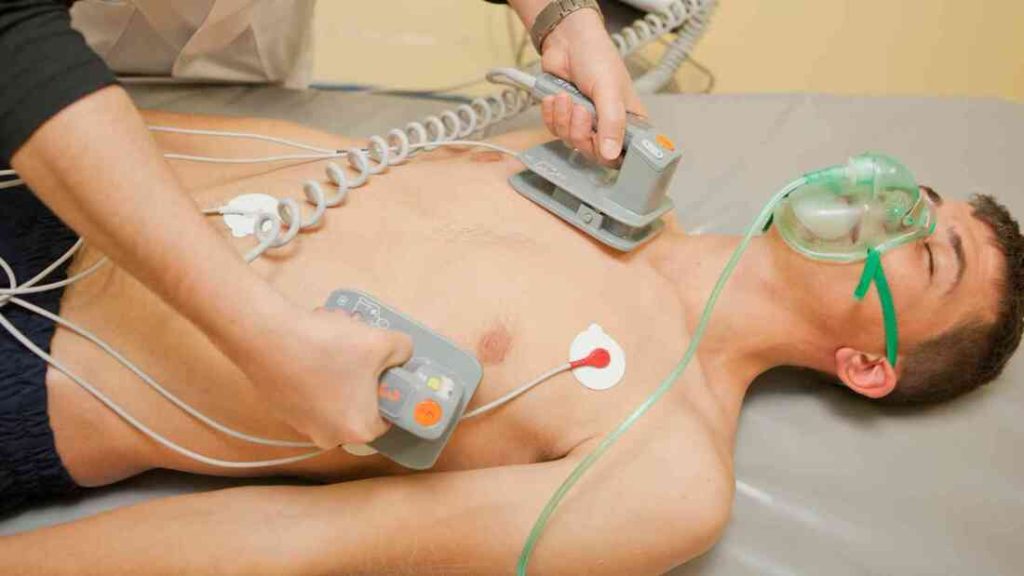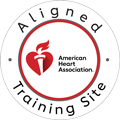What Is the ACLS Tachycardia Algorithm?
Tachycardia can be a life-threatening condition, and recognizing it quickly is critical to saving lives. The Advanced Cardiovascular Life Support (ACLS) Tachycardia Algorithm, developed by the American Heart Association (AHA), provides a step-by-step framework for evaluating and managing patients with dangerously high heart rates.
At CPR Kansas City, our mission is to help healthcare providers understand and confidently apply this essential protocol through hands-on, stress-free training. In this guide, we’ll walk you through the ACLS tachycardia algorithm, key treatment decisions, and the vital role of ACLS training in clinical settings.

Understanding the American Heart Association’s Tachycardia Algorithm
Tachycardia is defined as a heart rate greater than 150 beats per minute. While the causes can vary, the approach to treatment relies on a standardized process that evaluates the patient’s condition and tailors interventions accordingly. The ACLS Tachycardia Algorithm is not just a flowchart—it’s a critical thinking tool that helps providers determine whether a patient is stable or unstable, whether the QRS complex is wide or narrow, and whether the rhythm is regular or irregular. These initial assessments guide the next steps in managing the patient’s care.
Understanding whether a patient is stable or unstable is the first and most important step in the algorithm. Unstable patients—those experiencing hypotension, altered mental status, signs of shock, ischemic chest pain, or acute heart failure—require immediate intervention. On the other hand, if the patient is stable, providers have the opportunity to gather more data, such as a 12-lead ECG, and consider pharmacologic treatment. The width of the QRS complex is another crucial distinction. A narrow QRS suggests a supraventricular origin, whereas a wide QRS often indicates ventricular tachycardia or aberrant conduction.
Key ACLS Protocols for Ventricular Tachycardia (VT)
Among the most dangerous forms of tachycardia is ventricular tachycardia (VT), which can present as either monomorphic (a consistent QRS morphology) or polymorphic (variable QRS morphology), including torsades de pointes. If the patient with VT is stable, intravenous antiarrhythmic drugs like amiodarone may be administered, and expert consultation should be considered. However, if the patient is unstable, synchronized cardioversion is the recommended treatment—this involves delivering a shock in sync with the cardiac cycle to reset the heart’s rhythm.
One important distinction is whether VT presents with or without a pulse. If the patient is pulseless, the situation falls under the ACLS cardiac arrest algorithm, not the tachycardia algorithm. In this case, high-quality CPR and defibrillation are essential. Early recognition of VT, particularly in its pulseless form, significantly improves patient outcomes, underscoring the value of thorough training and preparation.
Call Us Now
Get the Best CPR Class in Kansas City Today!
First-Line Treatment for Unstable Tachycardia in ACLS
When dealing with unstable tachycardia, the AHA emphasizes immediate synchronized cardioversion. This intervention should not be delayed in favor of pharmacological options. If time allows and the patient is conscious, sedation is recommended, but the priority remains restoring a perfusing rhythm. Warning signs of instability—low blood pressure, confusion, chest pain, or signs of organ dysfunction—should trigger prompt action. In CPR Kansas City’s ACLS courses, students practice these scenarios using realistic simulations, helping them gain confidence in identifying and responding to unstable tachycardia.
What Drug Is Used for Tachycardia in ACLS?
Drug therapy has a role to play, particularly when the patient is stable. Adenosine is the first-line treatment for regular, narrow-complex tachycardias. It is administered rapidly via IV push, followed by a saline flush. If the rhythm converts, the diagnosis of supraventricular tachycardia (SVT) is likely. For wide-complex tachycardia, particularly monomorphic VT, amiodarone is a common choice. Alternatives like procainamide and sotalol can be used, but they require careful monitoring and are not recommended in unstable patients. It’s essential to remember that antiarrhythmic drugs should never be used in unstable cases—cardioversion takes precedence.
Here’s a simple chart summarizing common ACLS medications for tachycardia:
- Adenosine | Narrow-complex, regular rhythm | 6 mg rapid IV push; repeat with 12 mg if needed | Avoid in irregular rhythms
- Amiodarone | Stable wide-complex VT | 150 mg IV over 10 minutes | Monitor for hypotension
- Procainamide | Stable wide-complex VT | 20–50 mg/min until arrhythmia suppressed | Avoid in prolonged QT
- Sotalol | Stable wide-complex VT | 100 mg (1.5 mg/kg) IV over 5 minutes | Avoid in prolonged QT
These medications require precise timing and dosing, which is why hands-on training is essential. CPR Kansas City provides detailed instruction and practice to ensure that each participant feels fully prepared to manage these scenarios in real life.
Why ACLS Training Matters More Than Ever
The importance of ACLS training cannot be overstated. Real-world cardiac emergencies don’t come with pause buttons. Quick, informed decisions can be the difference between life and death. AHA-certified ACLS classes teach rhythm recognition, when to intervene with drugs or cardioversion, and how to work as a team under pressure. CPR Kansas City’s courses are designed to remove the stress from the learning process, making complex concepts easier to absorb and apply. Whether you’re a new nurse or an experienced provider, certification from CPR Kansas City opens doors in your healthcare career while ensuring you’re equipped to respond when it matters most.
Conclusion
The ACLS Tachycardia Algorithm is an indispensable tool for managing rapid heart rhythms. Start by evaluating the patient’s stability and rhythm characteristics. If unstable, act immediately with synchronized cardioversion—don’t wait for drugs to work. If stable, follow the protocol for pharmacologic management, selecting the appropriate antiarrhythmic medication based on rhythm type and QRS width. Most importantly, keep your skills sharp through regular practice and ACLS certification. At CPR Kansas City, we’re here to guide you every step of the way, from understanding the basics to mastering the advanced techniques that save lives.


